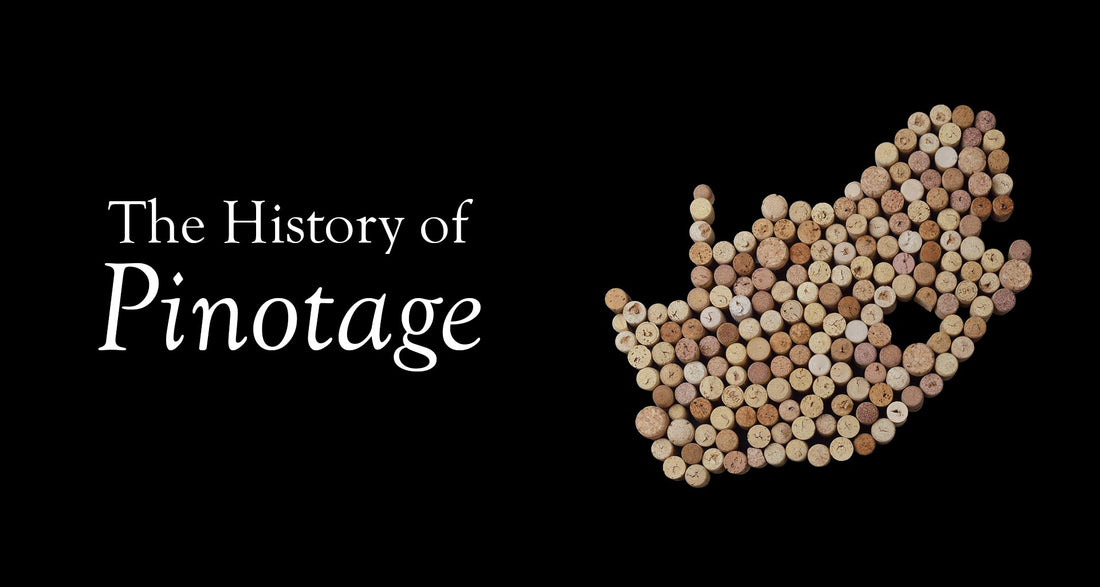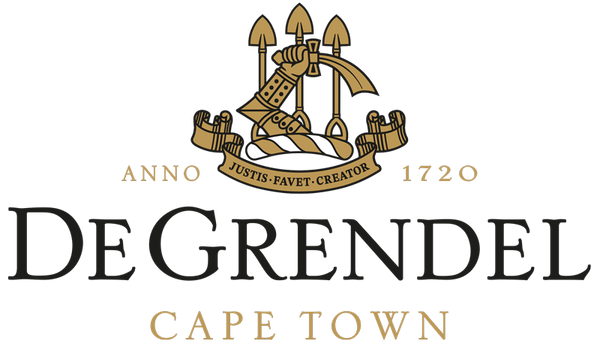
The History of Pinotage in South Africa
Share
There is so much to talk about when the topic of Pinotage, a uniquely South African grape, comes up. From historic tales of creation – merging Pinot Noir and Hermitage (Cinsaut) grapes by Prof Perold – to today’s legends crafting the latest Pinotage or Pinotage blends. The Pinotage tale is one worth well telling and should always end where it is enjoyed with friends, food or maybe even somewhere alone with a bottle of Pinotage as your company.
Meet the father of Pinotage
The story of Pinotage starts with its creator, Prof. Abraham Izak Perold (20.10.1880 – 11.12.1941). Perold’s academic achievements paved the way for the creation of Pinotage and included a B.A. degree in Mathematics, Physics and Chemistry, Ph.D in Chemistry (Germany) and a temporary professorship in Chemistry at the University of Cape Town. This background equipped him with a unique skill set and after his professorial stint in 1906 the Cape government, wanting to extend the range of grapes planted in the region, sent Perold on a grape varietal scouting mission.
Upon his return with 177 varietals, he became the first professor of Viticulture at Stellenbosch University and later became Dean of the Faculty of Agriculture. He joined the KWV in 1927 and made a huge contribution to the wine industry during his time there. To this day the 177 varietals still form part of a collection at the Welgevallen Experimental Farm of the University of Stellenbosch.
French prince meets humble peasant
In 1925 Perold successfully crossed Pinot noir and Cinsaut, which was then known as Hermitage. Hence the name Pino – tage. Prof. CJ Theron succeeded in rescuing and reproducing the original seedlings, of which there were only four, and undertook the considerable task of evaluation.
Sixteen years later, Charl Theron de Waal (known as CT de Waal), produced the first barrel of Pinotage wine in 1941 in Stellenbosch. The name appeared on a wine label for the first time in 1961, namely the SFW’s 1959 Lanzerac Pinotage.
But some unanswered yet pertinent questions remain: Why did Perold cross Pinot Noir, the prince of French red grape varieties, with Hermitage, a much humbler variety which did, however, perform well under local conditions? Did he, being the intellectual giant that he was, perhaps have a good idea of what the product could be? He did not leave any notes to explain his choice.
There was general excitement at the results of the early commercial plantings of Pinotage vines. The grapes ripened early, high sugar levels were achieved easily, and the vines stayed healthy and vigorous. The early wines also showed a deeper, more intense ruby colour than either parent did. Some tasters liked the vinosity of the newcomer, others were deterred by the acetone-like quality which was to bedevil Pinotage’s development for many decades.
Local is lekker, for everyone
The Diner’s Club Winemaker of the Year focuses on a specific varietal or wine category, with the 1987 competition dedicated to Pinotage. The winning wine was made by Beyers Truter at Kanonkop. Wine lovers went back to their cellars and opened the old bottles of Pinotage that they had stored right at the back. They were very pleasantly surprised at how well the wine had aged. Pleasant berry, banana and chocolate flavours had developed.
This followed on the sensation caused by the Morkels from Bellevue in 1959, when they won the prize for the best wine at the Cape Young Wine Show with this virtually unknown cultivar. The late senator Paul Sauer from Kanonkop did a great deal to make Pinotage popular. At one stage Pinotage lost a lot of its popularity in South Africa – it is interesting to note that in 1979 the plantings comprised only 66 639 vines. From 1990 onwards, with the lifting of sanctions, a renewed interest developed in this cultivar. A lot was done about plant improvement and clone evaluation over the years. Plantings have increased considerably in more recent times.
At the 1991 International Wine and Spirits Competition in London, history was made when the Kanonkop Pinotage received the Robert Mondavi Trophy as the Best Red Wine and Beyers Truter, then the winemaker at Kanonkop, was nominated as International Winemaker of the Year.
The judges sang Pinotage praises and used phrases such as “excellent wine and grape variety with tremendous potential”, and the “future of South Africa”, and “Pinotage should be taken seriously”. Since then, a separate category was created for this variety, putting it on the same level as the traditional European varieties. A truly inspirational “local is lekker” story.
Reference:
The Pinotage Association of South Africa (2021). www.pinotage.co.za
